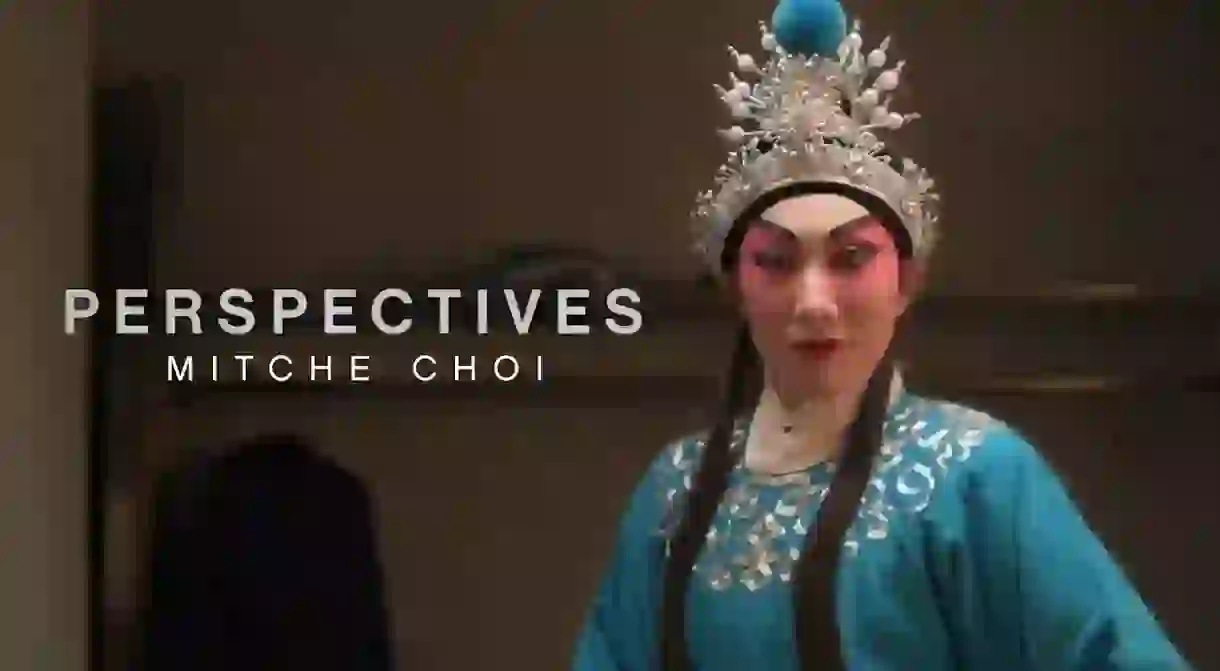Cantonese Opera Needs a Saviour, and Mitche Choi Wants To Be It

With its extravagant costumes, vocal acrobatics and use of martial arts, Cantonese opera is unlike any other form of entertainment on the planet. As enthusiasm for the opera wanes, it’s up to younger performers to save it. Enter Mulan enthusiast Mitche Choi.
Cantonese opera, or Yueju opera, has been part of Hong Kong’s cultural identity for 300 years. Formerly among the city’s most popular pastimes, its popularity has been chipped away by pop music, TV and other Western forms of entertainment – so much so that today there’s only one dedicated Cantonese opera theatre in Hong Kong.
Yet in 2009, UNESCO included the art form in its Representative List of the Intangible Cultural Heritage of Humanity, recognising the significance of Yueju opera to Cantonese speakers in China, Hong Kong and throughout the world.

Cantonese opera is an all-singing, all-dancing, all-fighting art
One champion of Cantonese opera is 26-year-old Mitche Choi. “When I watch Cantonese opera, I feel like I’ve been put in a time machine and brought back to ancient China,” says Choi. “Watching a performance, you’re able to connect with the mannerisms and even the values and beliefs of people from 400 years ago.”
Choi, who has been performing since the age of 12, professionally since graduating from university in 2013, speaks of the uniqueness of the art form. First, there’s its symbolic power, as a source of cultural pride and unity for Cantonese speakers. “Language is a big part of it,” says Choi. “Language embodies our culture. The culture of southern China is conveyed and preserved in the Cantonese language itself.”
Yueju opera enshrines Cantonese culture and language in tales of romance, war, history and myth. These are conveyed through a combination of singing (usually distinctive falsetto punctuated by gongs) acting, dancing and a form of martial arts called Wing Chun, which originates from China’s Guangdong Province. The integration of martial arts is another of the opera’s idiosyncrasies.

As for roles, it’s not just the action that appeals to Choi. “The character that I enjoy playing the most is Mulan, because Mulan is a female that pretends to play a male role. So it’s a reflection of who I am on stage.”
Beyond UNESCO-endorsed cultural uniqueness, Cantonese opera can be a lot of fun. You don’t need to understand Cantonese or be familiar with Chinese history and mythology to enjoy it. Even during lengthier performances, so much goes on visually, with the costumes, elaborate sets and make-up. “The costumes and make-up actually show the personality of the characters,” says Choi. “Certain colours of the make-up reveal their emotions.”
Innovation is key to preserving this Hong Kong tradition
Yet Cantonese opera’s decline is a pressing concern. “The audience consists mostly of old people,” says Choi. “I’ve been looking for young people in the industry to give performances and hold events to attract other youngsters, as well as giving talks and workshops to the English-speaking community to introduce them to Cantonese opera.”

Innovating and testing the form’s limits could be the solution. “It’s important to continue to develop this art in order to preserve it,” says Choi. “I’m working on creating innovative performances to appeal to a modern audience.” Here’s hoping this show is far from over.













